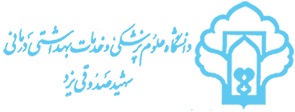(2025) Comparison of the Effect of 810 nm Diode Laser and Transcranial Direct Current Stimulation on Relieving Symptoms of Patients With Temporomandibular Joint Disorders. Journal of Lasers in Medical Sciences. ISSN 20089783
|
Text
Comparison_of_the_Effect_of_810_nm_Diode_Laser_and.pdf Download (932kB) |
Abstract
Introduction: The high prevalence of temporomandibular joint disorder (TMD) and the side effects of drug treatments, as well as invasive surgical methods, highlight the importance of less invasive and less complicated methods. This study aimed to compare the effectiveness of an 810 nm diode laser and transcranial direct current stimulation (TDCS) in the treatment of patients with TMD. Methods: The design of the study was a randomized controlled trial in which 34 patients with TMD were included and randomly treated with 810 nm diode laser or TDCS. In the laser group, 9 sessions of laser therapy were performed during 3 weeks. In the TDCS group, treatment was accomplished in 5 sessions within 5 consecutive days after sample selection. Before the first and after the last treatment session in both groups, the outcomes including the TMJ spontaneous pain score, facial muscle tenderness, maximum range of pain-free opening of the mouth and presence of jaw sounds were evaluated. The patient’s satisfaction score was evaluated immediately after treatment, as well as one month later. The data were entered into SPSS statistical software version 17 and statistically analyzed by independent and paired t-tests. A significance level of less than 5 was considered. Results: The average TMJ spontaneous pain score and muscle tenderness score in temporal, TMJ, and gonial regions decreased significantly in both groups (P<0.001), also the mean maximum mouth opening increased significantly in both groups (P<0.05), but there was no significant difference between the two groups. The average score of patient satisfaction with the treatment immediately and one month after the treatment in the laser group was significantly higher than that of TDCS. Conclusion: 810 nm diode laser and TDCS were effective in reducing the symptoms of TMD patients. The level of satisfaction with the treatment in the laser group was significantly higher than that in the TDCS method. © (2025), (Laser Application in Medical Sciences Research Center). All rights reserved.
| Item Type: | Article |
|---|---|
| Keywords: | Diode laser; Low-level laser; TDCS; Temporomandibular joint disorders; TMD |
| Subjects: | WU Dentistry. Oral Surgery > WU 140-166 Diseases. Injuries. Technology. Therapeutics WU Dentistry. Oral Surgery > WU 300-360 Operative Dentistry |
| Divisions: | Education Vice-Chancellor Department > Faculty of Dental > Department of Oral & Maxillofacial Surgery |
| Journal or Publication Title: | Journal of Lasers in Medical Sciences |
| Journal Index: | Scopus |
| Volume: | 16 |
| Publisher: | Laser Application in Medical Sciences Research Center |
| Identification Number: | https://doi.org/10.34172/jlms.2025.01 |
| ISSN: | 20089783 |
| Depositing User: | dr mehdi mokhtari |
| URI: | http://eprints.ssu.ac.ir/id/eprint/34791 |
Actions (login required)
 |
View Item |



